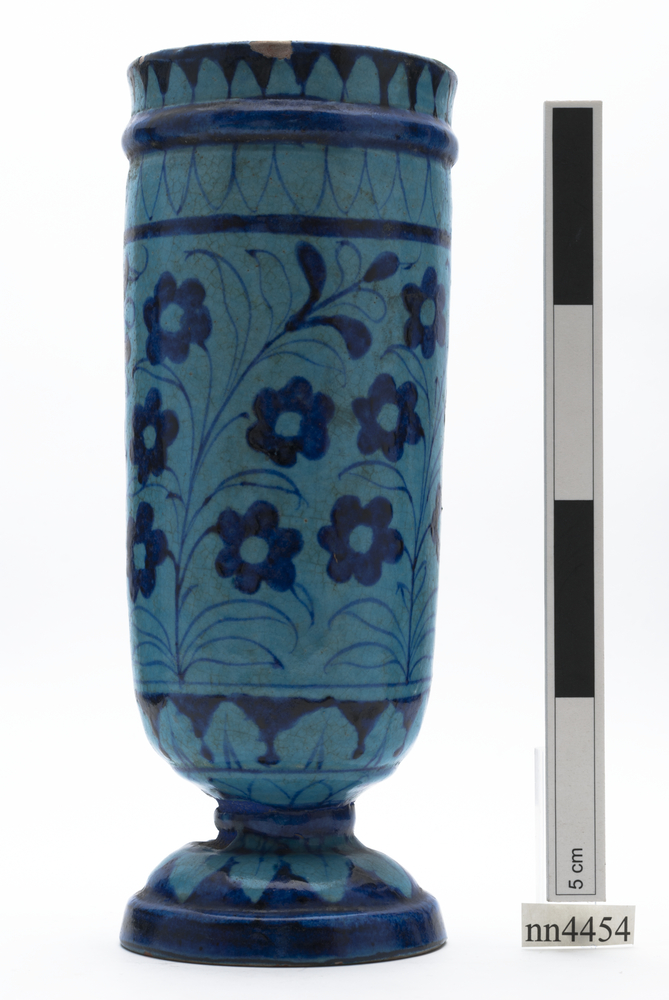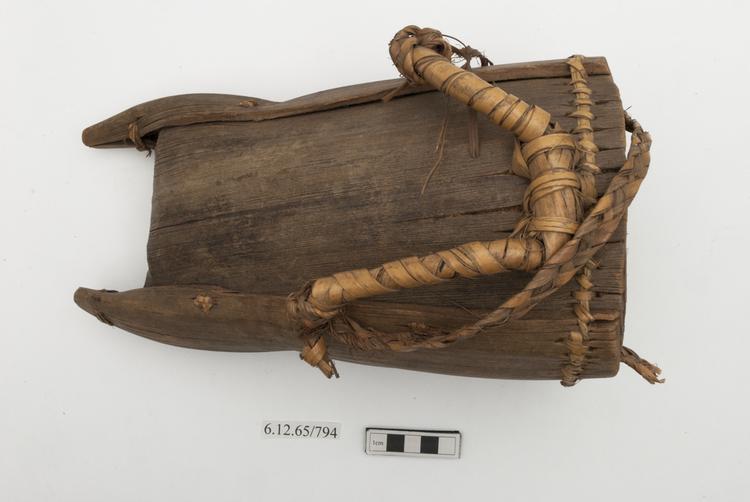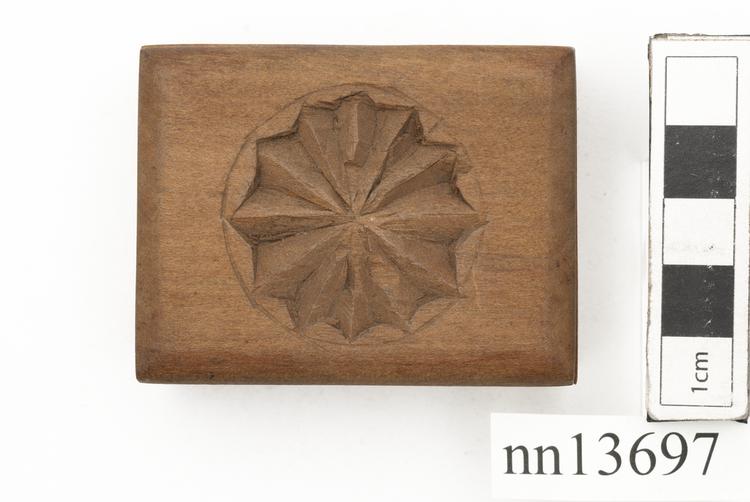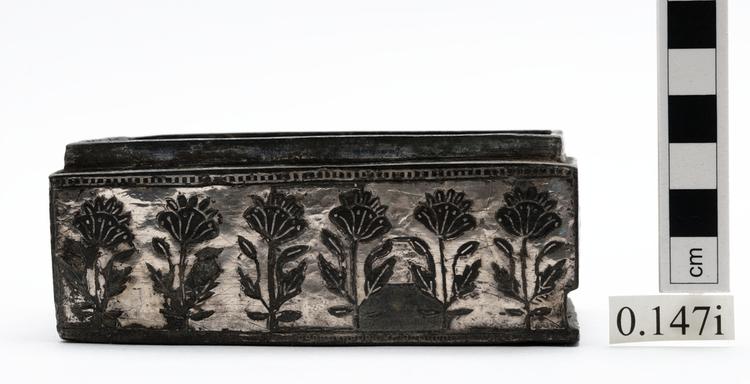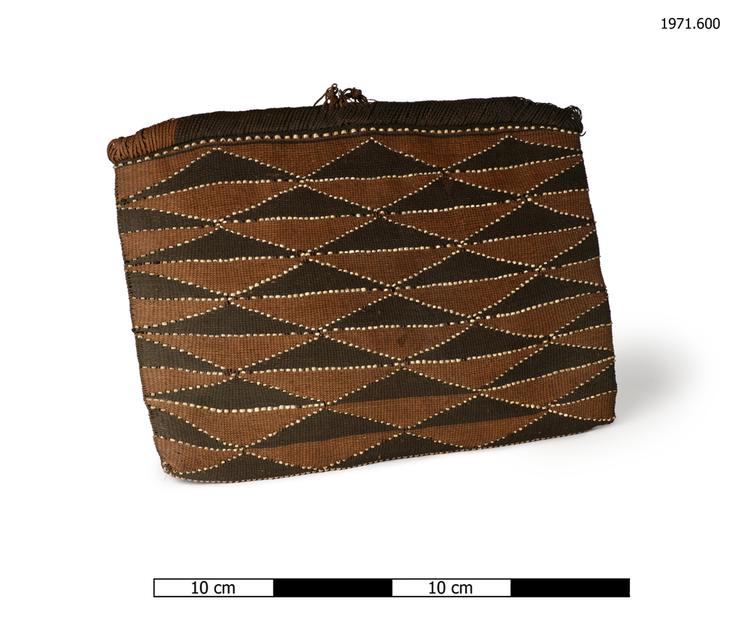


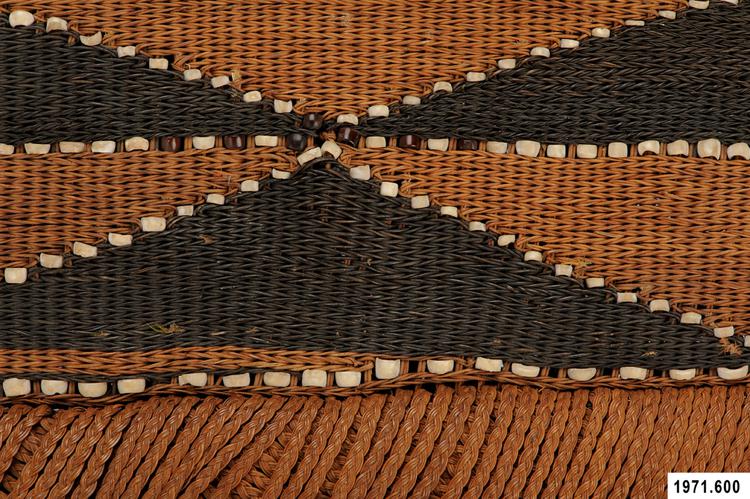
Incredibly finely finger-woven coconut fibre bag of flat rectangular form, open along its long edge, and fitted with a light carrying loop. The bag is constructed from two colours of coconut fibre cordage, dark and light brown, woven in a pattern of tessellating isosceles triangles in meshed rows, interspersed with rows of little white shell and coconut shell disc beads. The manufacture of this style of bag was discontinued in the early 19th Century.
Personal Bag, Kato Mosi Kaka, Tonga, Western Polynesia Flat rectangular bags of this finely woven, soft and flexible construction were prestigious personal possessions carried by both men and women in Tonga at the time the first Westerners visited in the late 18th Century. By the early 19th Century, however, the labour-intensive manufacture of this particular style seems to have been abandoned. This is likely, therefore, to be one of the museum's oldest works of Pacific art. The bag is constructed from two colours of finely rolled coconut husk fibre (kafa), finger-woven as individual strands into a smooth, even, durable and seamless textile. The darker brown fibre was produced by immersing fibres of the natural shade in black organic lagoon mud, a technique also used to blacken wooden items. The pattern of triangles on this example is called Papai, and can still be found on barkcloth, fine mats and baskets that modern Tongan women make today. Coconut fibre, shell discs. Late 18th Century. Transferred to the Horniman Museum from the Commonwealth Institute in 1971.



